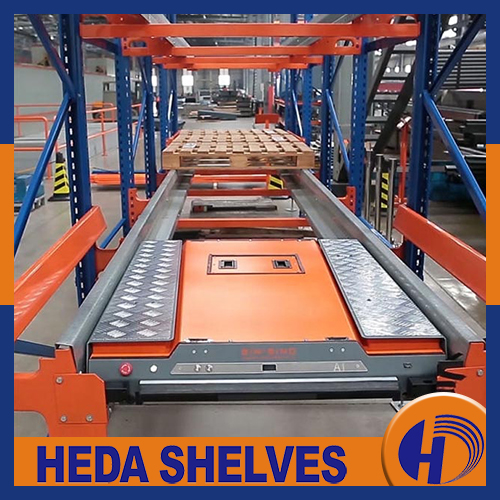First in first out, first in last out, easily solve the problem of industrial storage and logistics
Therefore, for people in the fresh food business and food business, how to extend the preservation period is their primary consideration.
Industrial storage and logistics processes for perishable products and foodstuffs must comply with very strict specific characteristics to ensure proper storage throughout the supply chain. These characteristics make it a complex product in terms of logistics management.
First, perishable products are those which, due to their properties and physical composition, are likely to soon expire or deteriorate and lose their original properties due to external factors such as humidity, temperature, or atmospheric pressure.
Many foods are perishable products, such as dairy products, oils, various meats and sausages, fish and shellfish, fruits, vegetables, fruit juices and prepared foods. In addition to food, flowers and plants are also considered perishable products.
Logistics characteristics of perishable products
Perishables are the main characteristics of perishable products and foods and will be defined by their logistics processes.
Food and many perishable chemical or pharmaceutical products are produced for eventual human use or consumption. Therefore, it is important to prevent product spoilage, which can lead to financial losses, health and user confidence.
These perishable products are composed of biodegradable natural compounds derived from living organisms and therefore composed of water, protein, carbohydrate and mineral based compositions that must remain unchanged throughout the logistics and industrial storage processes.
The supply chain for perishable products ranges from their initial stages of production and processing, subsequent transport, distribution and storage, to eventual purchase by consumers at the point of sale or at home.
Key to the whole process is the joint efforts of manufacturers, distributors, logistics and transport operators, and industrial suppliers.
This is where the selection and suitability of an appropriate storage system for a warehouse or distribution center comes into play, where perishable products will be stored industrially.
Key aspects to consider when storing perishable products and foods
When selecting the ideal storage system for perishable products, the specific logistics needs of each customer must be considered, but there are several common key aspects to consider.
Safety and health
As these are consumer goods, it is essential for perishable goods to avoid contamination and grime in the warehouse, thereby preventing the creation of microorganisms that could damage the final product.
Sanitary measures must be taken for all warehouse elements, the warehouse space itself (floors, walls and ventilation), all industrial equipment in contact with the products (shelves, forklifts, pallets and other accessories), and operators handling unit cargo.
Temperature and humidity condition
Most perishable products and foods require certain temperature and humidity conditions to maintain their original properties. This usually means that perishable products are stored in cold storage or in a pallet racking system in the freezer.
It is important to adapt these environmental conditions to the types of perishable products, as there are significant differences between them.

Quick handling process
Unit loads of perishable products, by their very nature, must spend as little time in adverse environmental conditions as possible, so the receiving and storage processes, as well as the unloading and transportation processes, must be fast and safe.
To this end, the warehouse must be equipped with appropriate machinery and a sufficiently qualified manpower team.
If perishable products that are considered "fresh" spend more time under adverse conditions than indicated, they may not remain so.
Efficient inventory management (FIFO)
The correct rotation of perishable products must be clearly observed.To this end, excellent logistics management of inventory and inventory is required to ensure that products with the shortest shelf life are shipped first.
The FIFO inventory management method is the most efficient way to ensure inventory turnover in an industrial shelf system in a warehouse.
The FIFO method ensures that the first unit of cargo placed in the storage system will be the first cargo to be unloaded and shipped to its final destination.
This ensures that stored perishable products and food items spend as little time as possible in the warehouse and reach the point of sale on the appropriate date.
Shuttle Storage System is a compact and semi-automated pallet storage solution that uses pallet shuttles to transport loads inside shelves.
It is a system that optimizes warehouse space and height across the board while supporting FIFO and LIFO management, making it an ideal solution for perishable products and products that need to be stored in cold or frozen conditions.
In addition, forklift loading and unloading is fast and safe, automatic inventory control is enabled, and the AR Shuttle can operate at temperatures as low as -30 ° C.





Leave a Reply
- Advantages of Gondola Shelving - Why It Is Popular In Retailing
- 9 Ideas To Attract Customers By In-store Merchandising Displays
- Advantages & Features of Pallet Rack Mezzanine for Warehouse
- Fruit And Veg Display Stand - The Best Types & Layout Suggestions
- How To Boost Sales for Shops With Product Display